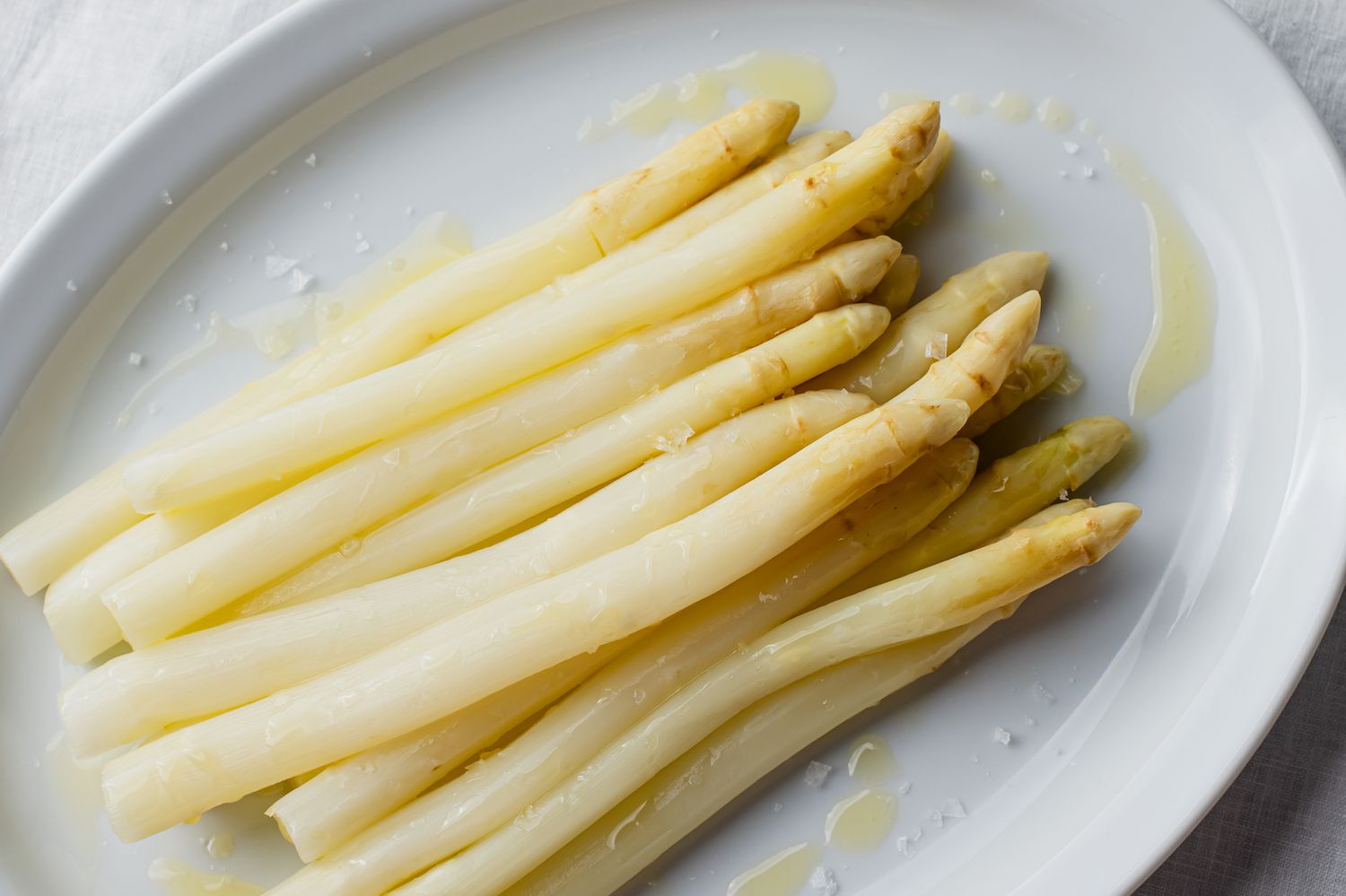
Why is white asparagus white? White asparagus, often called the "royal vegetable," gets its unique color from how it's grown. Unlike green asparagus, white asparagus is cultivated underground, away from sunlight. This process, known as "etiolation," prevents the development of chlorophyll, the pigment responsible for the green color in plants. Farmers cover the spears with soil or black plastic tunnels, ensuring they remain pale. This labor-intensive method results in a tender, milder-tasting vegetable. White asparagus is prized in many European cuisines, especially in Germany and France, where it’s celebrated during spring festivals. Curious about more? Let's dig into 20 fascinating facts about this gourmet delight!
Key Takeaways:
- White asparagus, also known as the "royal vegetable," is a delicacy with a milder flavor than green asparagus. It's packed with vitamins, fiber, and antioxidants, making it a healthy and delicious addition to any meal.
- This unique vegetable is not only a culinary delight but also holds cultural significance in countries like Germany, the Netherlands, France, Spain, and Belgium. It's celebrated during harvest seasons and enjoyed in a variety of traditional dishes.
What is White Asparagus?
White asparagus, often called the "royal vegetable," is a delicacy in many parts of the world. Unlike its green counterpart, it grows underground, preventing chlorophyll from developing and keeping it white. Let's dive into some fascinating facts about this unique vegetable.
- White asparagus is grown by covering the shoots with soil or black plastic to block sunlight.
- It has a milder, more delicate flavor compared to green asparagus.
- The texture is tender yet slightly fibrous, requiring peeling before cooking.
- Harvesting white asparagus is labor-intensive, often done by hand to avoid damaging the spears.
- It's a spring vegetable, typically harvested from late April to early June.
Nutritional Benefits of White Asparagus
White asparagus isn't just a tasty treat; it's packed with nutrients that can benefit your health. Here are some key nutritional facts.
- Rich in vitamins A, C, E, and K, which are essential for overall health.
- Contains folate, important for cell growth and metabolism.
- High in fiber, aiding in digestion and promoting gut health.
- Low in calories, making it a great addition to a weight-loss diet.
- Contains antioxidants that help fight free radicals in the body.
Culinary Uses of White Asparagus
White asparagus can be prepared in various ways, each bringing out its unique flavor and texture. Here are some popular culinary uses.
- Often served with hollandaise sauce or melted butter in European cuisine.
- Can be grilled, steamed, boiled, or roasted, depending on your preference.
- Frequently used in soups, salads, and risottos for added flavor and texture.
- Pairs well with seafood, particularly salmon and shrimp.
- Commonly found in gourmet dishes and fine dining restaurants.
Cultural Significance of White Asparagus
White asparagus holds a special place in the culinary traditions of several countries. Let's explore its cultural significance.
- In Germany, it's known as "Spargel" and celebrated with festivals during the harvest season.
- The Netherlands also has a strong tradition of white asparagus consumption, often referred to as "white gold."
- In France, it's a staple in many regional dishes, particularly in the Alsace region.
- Spain's Navarra region is famous for its high-quality white asparagus, often enjoyed in tapas.
- In Belgium, it's a popular ingredient in traditional dishes like "asperges à la flamande."
White asparagus is more than just a vegetable; it's a symbol of culinary heritage and a seasonal delight enjoyed by many around the world.
Final Thoughts on White Asparagus
White asparagus isn't just a fancy vegetable; it's packed with nutrients and has a rich history. From its unique growing process to its delicate flavor, this veggie stands out. It's loaded with vitamins like A, C, and E, and minerals such as potassium and calcium. Its antioxidant properties help fight free radicals, making it a healthy choice.
Cooking white asparagus can be a bit tricky, but the effort is worth it. Whether you steam, grill, or roast it, the taste is always delightful. It's a staple in many European cuisines, especially in Germany and France.
Next time you're at the market, consider picking up some white asparagus. It's not just good for you; it adds a touch of elegance to any meal. Give it a try and enjoy its unique benefits and flavors.
Frequently Asked Questions
Was this page helpful?
Our commitment to delivering trustworthy and engaging content is at the heart of what we do. Each fact on our site is contributed by real users like you, bringing a wealth of diverse insights and information. To ensure the highest standards of accuracy and reliability, our dedicated editors meticulously review each submission. This process guarantees that the facts we share are not only fascinating but also credible. Trust in our commitment to quality and authenticity as you explore and learn with us.


